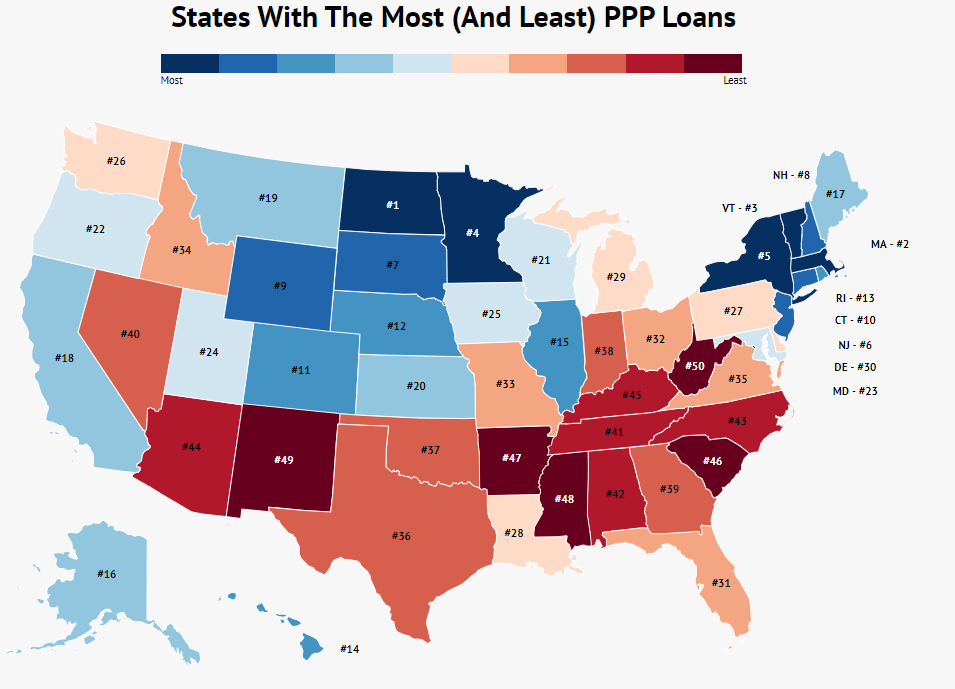In a recent op-ed for CNN, entrepreneur Steve Case and former U.S. Rep. John Delaney discussed what federal policymakers can do to ensure aid reaches all entrepreneurs — particularly those in greatest need.
Among the key themes is the need for a place-based strategy that brings greater focus to businesses in oft-overlooked regions:
“The opportunity inequity between the coastal tech hubs and cities in the middle of the country, accelerated by globalization and automation, has gone on for far too long. If we — Democrats, Republicans and independents — want America to continue to be a source of radical innovation, we cannot afford to ignore this problem any longer.”
When the first round of Paycheck Protection Program (PPP) loans was released, data showed strong lending imbalances that favored states in the Northeast, West Coast, and Plains. Southern states, including those with the greatest share of Black and Hispanic residents — as well as many with significant rural populations — ranked consistently low.

Momentum is growing for a second round of relief and, potentially, stimulus to jumpstart affected economies. Any approach that allows for existing inequities to deepen will simply be a band-aid atop far greater, systemic problems.
What allowed for the first round to break down along such manifest geographic — and by extension — racial lines? The challenges faced by many Black owners in navigating a chaotic and confusing PPP process is well documented. Data from coalition member Small Business Majority shows the program reached fewer Black-owned businesses, while many didn’t qualify for relief as non-employer businesses.
Many of these issues aren’t unique to entrepreneurs of color but are shared widely in regions underrepresented in entrepreneurship. Such underrepresentation is true not only of the entrepreneurs on the ground, but also in their visibility and representation among policymakers and other key decision-makers.
As a new presidential administration prepares to enter the White House, it’s critical the diversity of America’s entrepreneurs is reflected in the advisors informing the country’s new and small business agenda, particularly as it relates to COVID recovery. This includes both diversity of race and ethnicity, as well as region.
As Case and Delaney noted in their op-ed, New York and California came back stronger than ever following the 2009 recession. The same should be true of economies across the country this time — from the Sun Belt to the Rust Belt and everywhere in between — but proper attention to these underrepresented regions is necessary to avoid a recovery that simply deepens existing divides.

